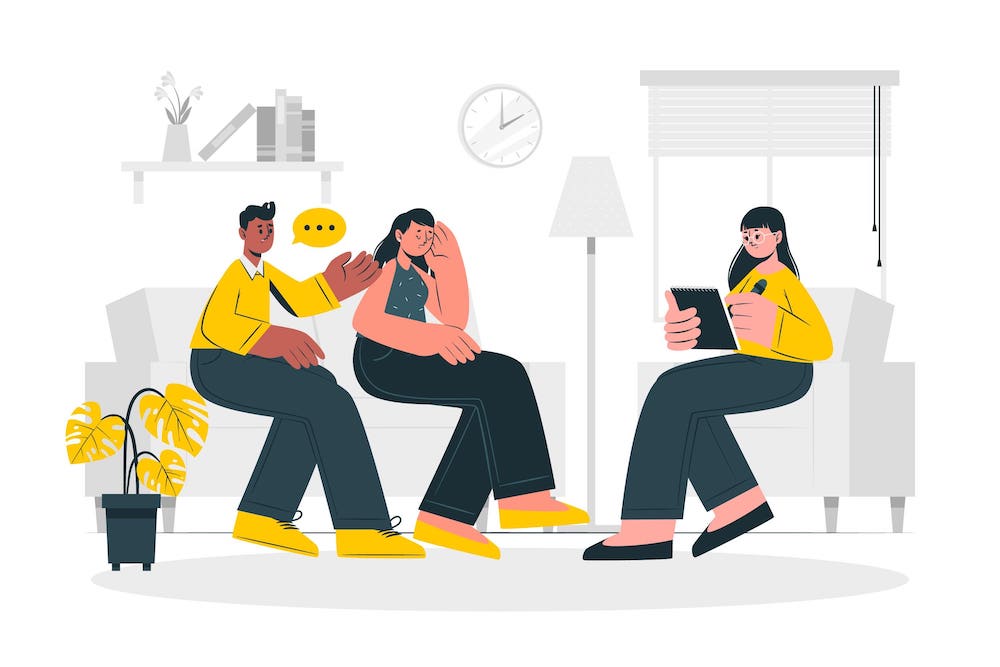What is it like to open up and disclose your most excruciating and vulnerable feelings to another individual when you are fighting anxiety, depression, and self-criticism? How do patients experience the role of relationships with their therapist when going through emotion-focused therapy? Many leading theorists and clinicians consider therapeutic relations the primary vehicle for client change.

What is emotionally focused therapy?
EFT – Emotionally-focused therapy is a humanistic therapy that emphasizes assisting individuals in accessing and changing their emotional experience. Emotion-focused therapy is founded on the proposition that emotions are essential to identify. This therapy also poses that emotions guide individual choice and decision-making. EFT further presumes that avoiding unpleasant feelings or lacking emotional awareness may result in harm.
The primary goal of EFT is to access and alter maladaptive emotions, such as oversimplified fear and shame that are assumed to be the basis of painful symptoms, and activate adaptive feelings that stimulate growth and therapeutic change. Emotional-focused therapy combines interventions from gestalt therapy and person-centered therapy, integrating affectively tailored empathic relations and altering particular emotional processes that lead to depressive symptoms and anxiety.
EFT is also applied among couples. It is used in the adult love and bonding process in couples and can be used to solve distress in the intimate relationship of adults. EFT is applied in family therapy to assist members of family in connecting and enhancing emotional attachment. Spouses finding treatment to strengthen their relations might find EFT a helpful tactic, as it helps them to understand their emotional reactions better. Therapists who work with couples and families seek to help them create secure lasting bonds and strengthen the earlier positive bond with the objective of assisting those undergoing therapy to boost security and closeness.
Cases, emotionally focused therapy is used
Unsuccessful efforts to manage emotions might worsen many issues that prompt individuals to seek therapy. People undergoing depression, for instance, might spend huge time avoiding circumstances that lessen their mood. Individuals with severe anxiety, in most cases, feel weakened by their efforts to reduce worry and fear. They significantly try to stay away from things or people that elicit anxiety.
Through emotionally focused therapy, individuals might realize and view their emotions as valuable information sources rather than complex and painful states. They learn to experience and instead suppress their emotions. Emotionally focused therapy tackles the regulation and emotional impact. Emotions affect numerous psychological health issues. As a result, emotionally focused therapy provides multiple benefits in treating many mental problems.

Emotionally focused therapy was initially used in treating depression. Nonetheless, it has evolved and expanded in practice to be utilized in addressing the following;
- Anxiety
- Eating disorders
- Borderline personality
- Childhood neglect or abuse and
- Interpersonal issues
Emotionally focused therapy has also been proven effective in working with spouses in distress. This technique has also been an effective tool for couples dealing with traumatic events and infidelity. This approach is also reasonably practical with different cultural groups across the globe.
How does emotionally focused therapy work
EFT entails nine treatment steps. In the earlier treatment sessions (the initial 4 phases), the counselor evaluates the relations styles of the spouses and assists reduce skirmish. In the middle stages of therapy (steps five to seven), the spouse collaborates to develop innovative, strong bonds in the union. The transformations are merged in the last phases as the therapy closes.
A couple can begin treatment by learning strategies to reduce conflict on frequently contested topics such as finances. After that, the couple starts learning ways of expressing deep feelings regularly covered by frequent relationship conflicts, for example, lack of trust. Identifying and discussing the deeper feelings compassionately helps them form deep bonds. The last phases of treatment assist spouses become more empowered to independently pinpoint attachment concerns underlying conflict and express similar sentiments in future interactions. Emotionally focused treatment is deemed whole when couples take part in transformed interaction patterns acquired in treatment outside the treatment settings.
The steps and stages of emotionally focused therapy
Stage 1 – Deescalation
- Delineating conflict issues
This first step of emotionally focused therapy seeks to identify the critical issues of concern. Couples or patients visit their therapist, who identifies their cause of seeking therapy.
- Identifying the negative interaction pattern
In this step, the therapist seeks to identify ways negative interaction pattern increase conflict when key issues appear.
- Diving deeply into the emotions underlying and fueling each partner’s position
Here, the emotionally focused therapy therapist helps identify unrecognized negative emotions and fears related to attachment underlying the negative patterns of interaction.
- Reframing critical issues for the couple regarding negative patterns of interaction, underlying emotions and fears, and each individual’s attachment needs.
The therapist reframes vital issues for the spouse and each partner’s attachment needs.
Stage Two – Changing Interaction Patterns

5. Identifying disowned needs and aspects of self that have been hidden for each partner
Here individuals are helped in voicing their deep emotions and attachment needs.
- Partners are coached in ways to express acceptance and compassion for a partner’s attachment needs and deep emotions.
Spouses are trained to express acceptance and compassion for a partner’s attachment needs and deep feelings.
- Partners are coached in expressing attachment needs and emotions while restructuring the interaction to create genuine emotional engagement.
In this phase, the therapist coaches the couples on expressing attachment needs and emotions and issues that have higher chances of causing conflict.
Stage Three – Consolidation and Integration
- The therapist coaches the couple to use new communication styles to discuss problems and develop new solutions.
This step occurs in the last phase. The therapist trains the couple in utilizing communication styles to discuss old challenges and develop innovative solutions.
- The couple learns to use the new skills, positions, and cycles of emotional closeness in practice.
This is the last step of therapy. The couple learns approaches to utilize skills performed in the treatment and is taught and encouraged to adopt the new interaction patterns as a regular part of life after treatment.
EFT has been quite effective as a therapeutic model. It is backed by extensive research. There have been many years of peer-reviewed research on the effectiveness of EFT. Couples have been found to enhance their relations after participating in the therapy.



